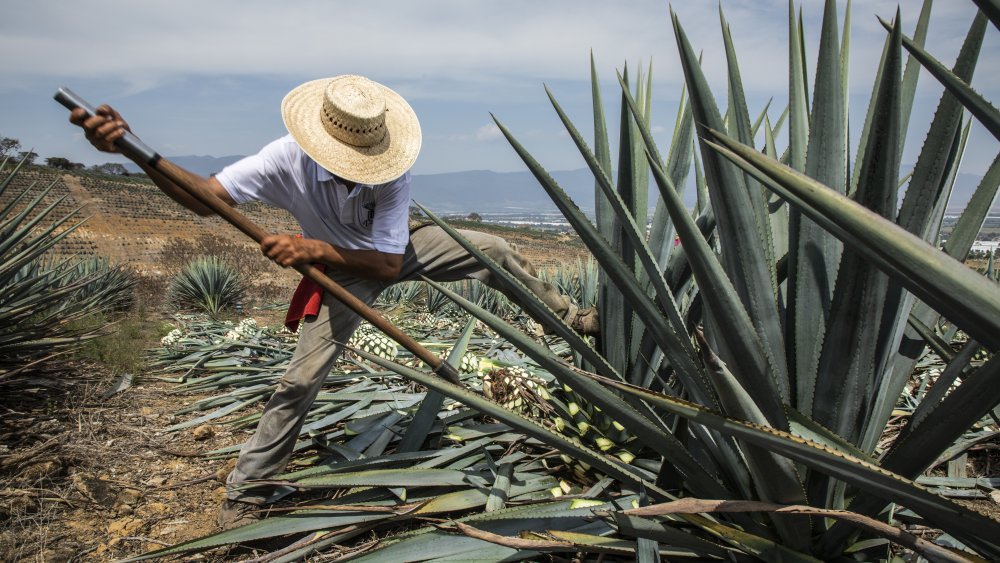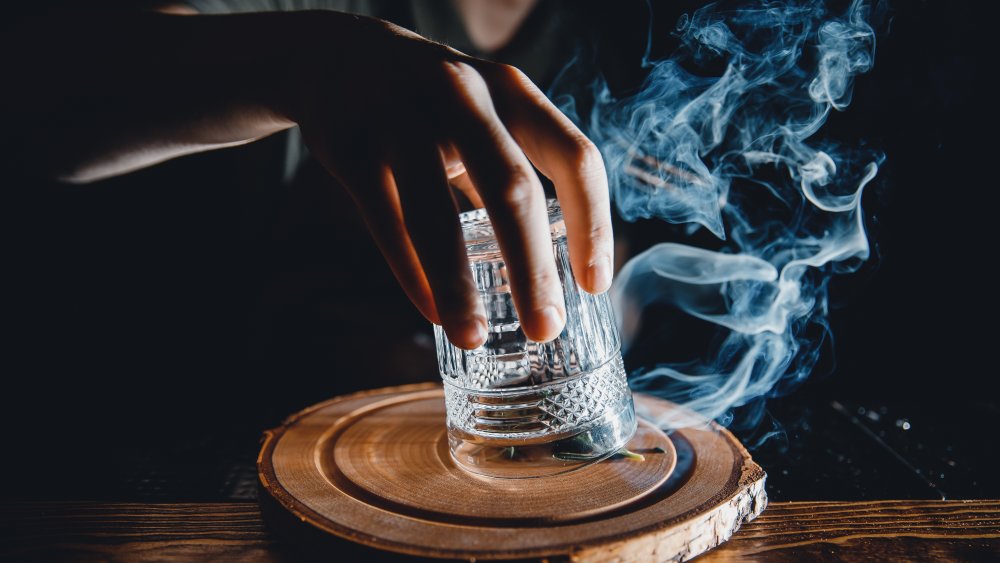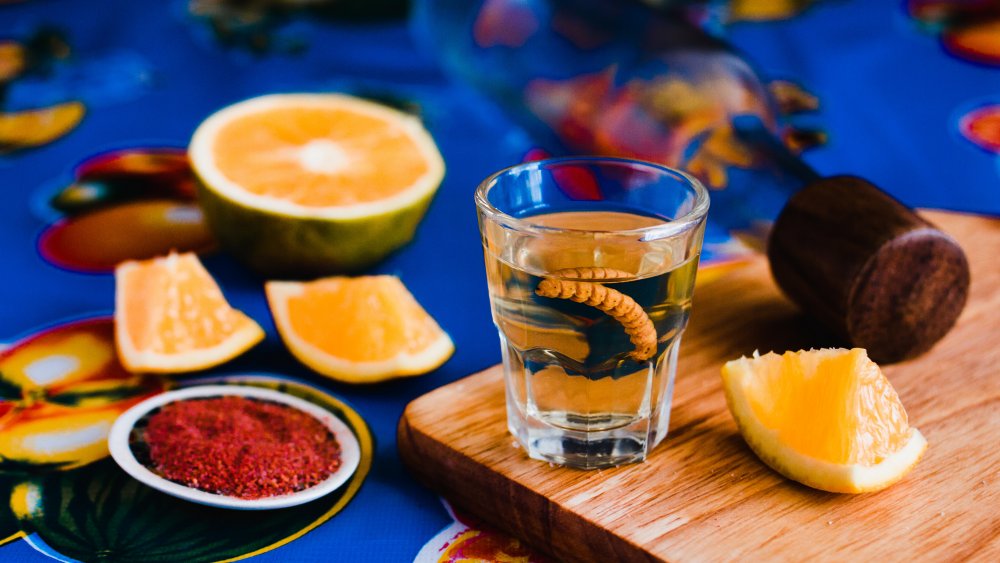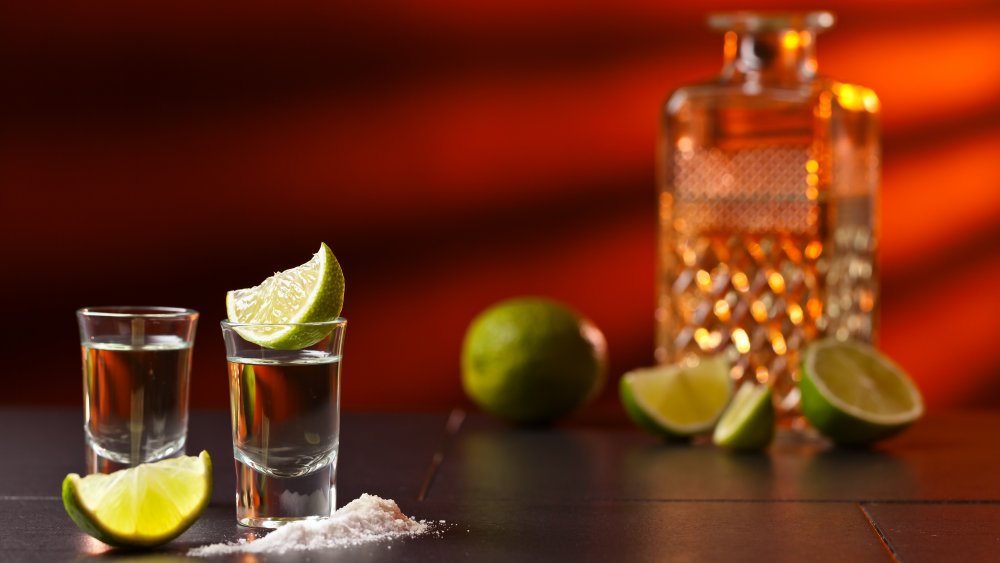Myths About Tequila You Can Stop Believing
As summer hits, it can feel like the perfect time for a margarita. Or maybe you'll rise above the norm and try a paloma — the margarita's rose-colored cousin, which combines grapefruit soda with tequila and lime. Add some sangrita — a mixture of orange, tomato juice, grenadine and chiles — and you've got the Mexican vampiro.
But before you wade into the world of tequila, we encourage you to do a little research on the world-famous mezcal. (Yes, tequila is a type of mezcal. We'll get to that in a minute.)
As we've discussed, tequila has a long, artisanal past — a past that stretches far beyond college parties and Miami beach house blowouts. The drink has been distilled, time and time again, since the 1600s as far as we know, according to The Atlantic. And when something is centuries old, it's bound to accumulate some misconceptions and stereotypes. Don't worry: we're here to debunk your tequila tales.
It makes you sick
The scenario is familiar to many: You're unbearably hungover. No amount of coffee will do. As the sunshine glares down on your poor, aching head, you curse the tequila you drank last night. Clearly, it was the tequila. You'll never drink it again.
Chances are, it wasn't tequila that caused your downfall. It was cheap, bad, mixto tequila.
"What's mixto tequila?" you grumble, as you bitterly attempt to nurse your hangover. Technically, tequila can be mixed with another spirit — like the alcohol from cane sugar — and it can still be labeled as tequila in the United States. Legally, mixto can contain as little as 51 percent of agave-based tequila, and 49 percent of basically anything else. And the bottle won't even tell you that it's mixto tequila, thanks to U.S. regulations (via VICE). So if you're going for tequila, and the label doesn't boast that it's 100 percent agave, you should be skeptical.
Authentic tequila has a worm in the bottle
No, no, no. This one's totally wrong. Let's start with the worm.
It's not just any old worm, and it's technically not a worm at all. The insect is a gusano de maguey. Though its name means "maguey worm," technically, it's a caterpillar that tends to hang out on Mexico's agave plants. The gusano is a delicacy in Mexican cuisine: It can be fried for tacos or pulverised into a protein-packed salt, according to Atlas Obscura.
And yes: Our new favorite critter has been known to float in a bottle of mezcal every now and then. However, mezcal and tequila are not the same thing. A tequila is a type of mezcal, the way bourbon is a type of whiskey. Tequilas can only be distilled from blue agave, they can only be produced in certain regions of Mexico. And while the worm has made cameos in some bottles of mezcal, it is not bottled in tequila, according to Taste of Home.
The worm isn't even a sign that your mezcal is top-notch. The custom didn't emerge until the 1940s or '50s, according to Thrillist. And its origin is still a little vague. Was it added to enhance the drink? Was it a genius marketing scheme? They're all still-existing theories, floating around like that poor little caterpillar (via VICE).
One thing's for sure: if there's a worm in your tequila bottle, chances are you've done something wrong.
It's best consumed as a shot
Who can imagine tequila without that startling sensation of throwing it back, and biting into your lime wedge to mitigate the shock? A lot of people, apparently. Turns out, you're not supposed to lick salt off your hand and resemble some sort of injured animal.
If tequila is good — if it's pure, and not mixto — you shouldn't need to distract yourself from the fact that you're drinking it. Good tequila can, and should, be sipped. After all, its flavors are complex and nuanced, according to Javier Moreno Gomez, a tequila sommelier in Cancun. "Tequila is known to have 600 different aromas," he told Business Insider, including "citrus, mint, floral, honey, oak, almond, vanilla, butterscotch, chocolate, among others."
Once you've graduated from slurping down your tequila shots, you'll notice there's a world full of possibilities. Tequila has even been lauded as an appetite stimulant, according to Forbes. Clear, blanco tequilas can be paired with ceviches, while aged añejos can accompany a grilled, charred steak (via Epicurious).
Real tequila — distilled from the blue agave plant — is undeniably pricier, but better. Real tequila, consumed in moderation, won't hurt you the way mixto tequila has. Real tequila is so much cooler than the myths you've heard.



